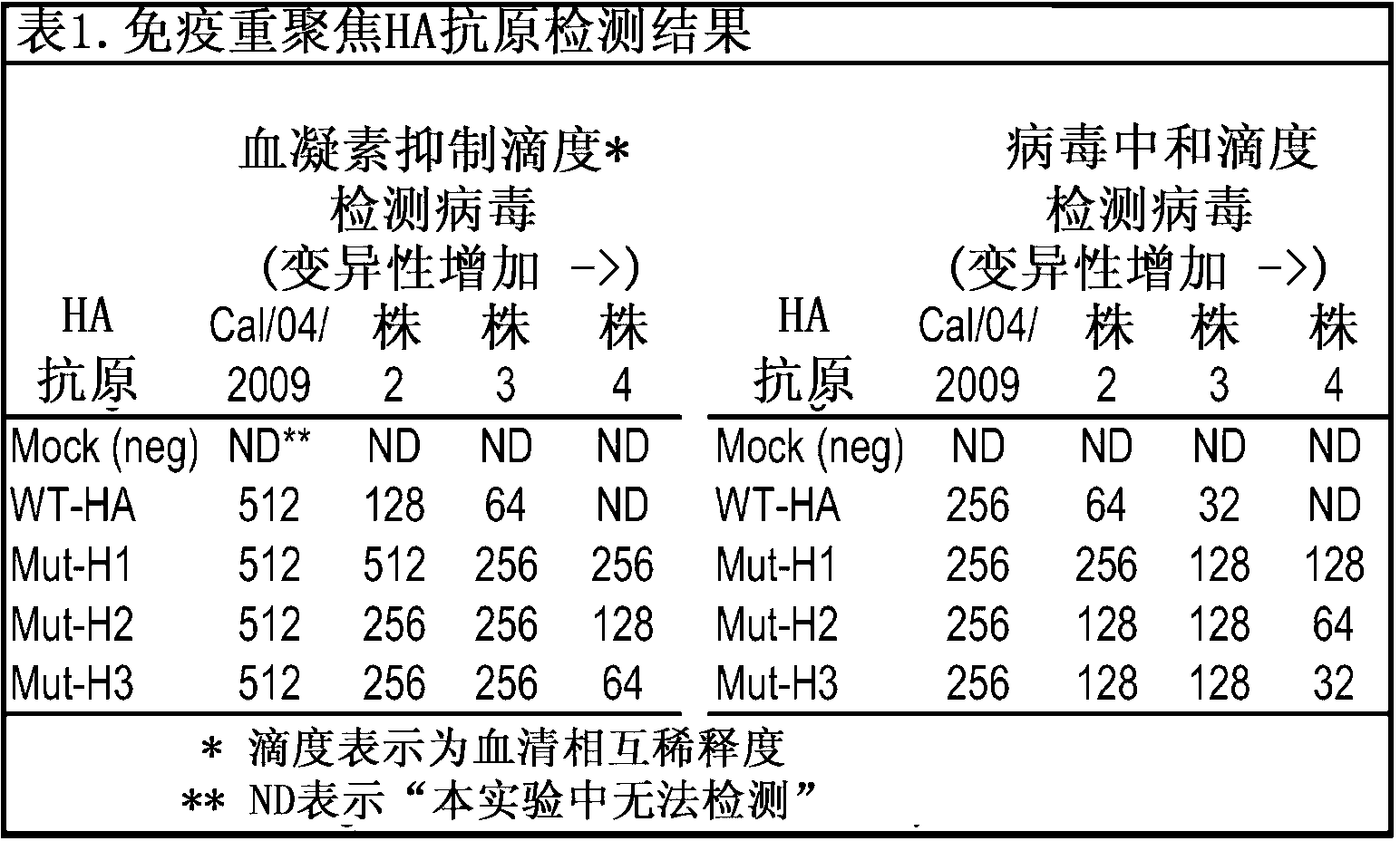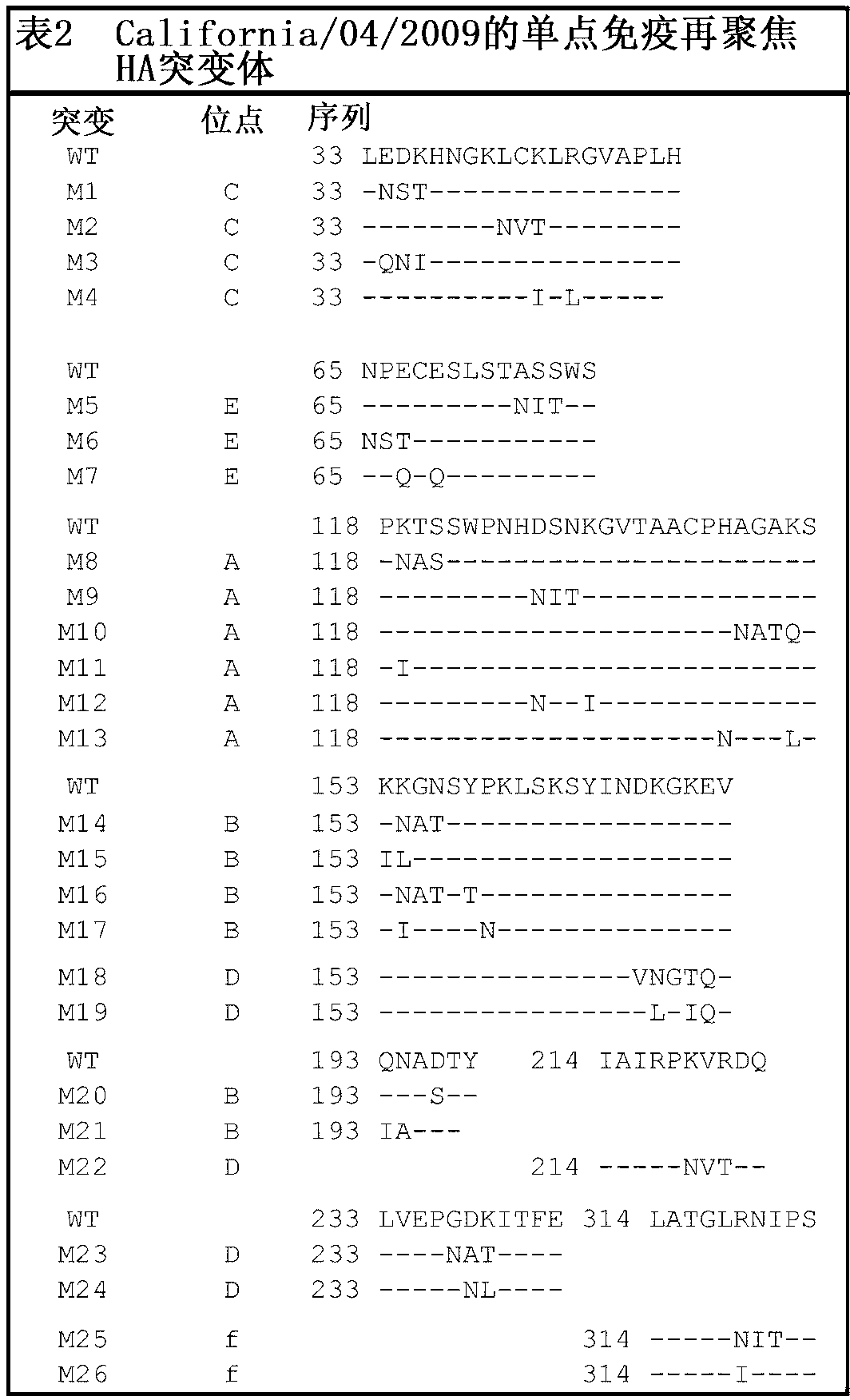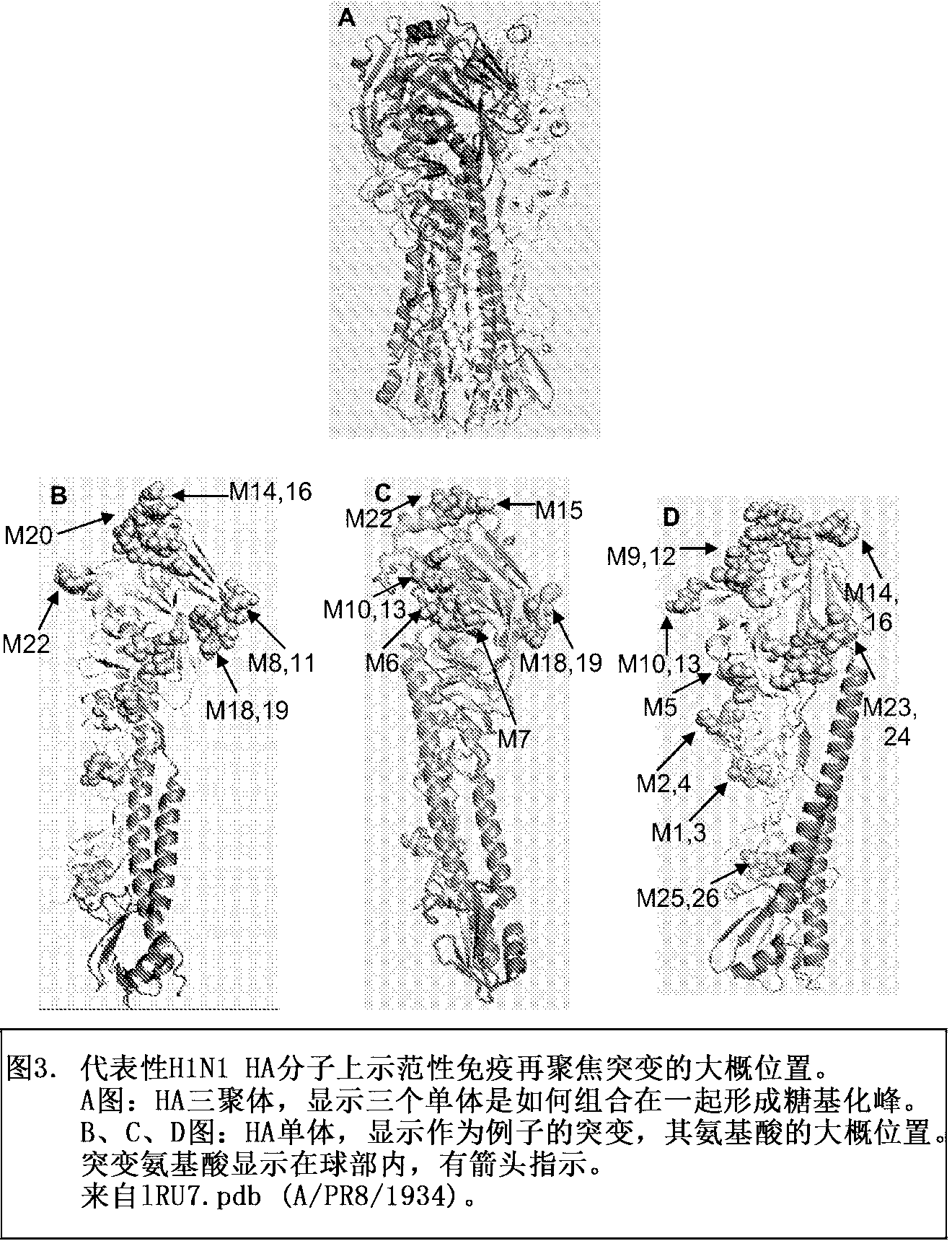Immunogenic influenza composition
An immunogenic epitope and influenza technology, applied in the direction of immunoglobulin, antibody medical components, virus antigen components, etc., can solve the problems of short lifespan, side effects of vaccines, inability to deal with bacterial strains and drifting strains, and save money Effect
- Summary
- Abstract
- Description
- Claims
- Application Information
AI Technical Summary
Problems solved by technology
Method used
Image
Examples
example 1
[0158] Eight immune-weakening and refocusing hemagglutinin genes from a Wyoming strain (H3N2) were designed and processed as described above. For example, nucleotide replacement by site-directed mutagenesis, introduction of N-linked sequences, complex glycosyl modifications, and / or at 5 major immunogenic and highly variable sites containing strain-specific epitopes where the amino acid is deleted and / or the charge of the amino acid is changed.
[0159] With each change, the introduction of N-linked sequences serves to maximize the size of the attenuation of immunity, especially at larger antigenic sites, while minimizing the number of wild-type amino acid changes required to attenuate the glycoprotein. and any effect of the conformational complexity of the receptor-binding domain. In some cases, only 3 amino acid changes were required. Antigen site B (187-196) targets both B cells and CD4 helper T cells IDNPEs.
[0160] To expedite research, DNA and protein subunit vaccines...
example 2
[0174] Based on multiple considerations, including analysis of immunodominant epitopes, evolution, sequence diversity, and structural data, an immune-refocusing hemagglutinin antigen for the porcine HINlvA / California / 04 / 2009 strain was designed. The following mutations were designed to refocus the immune response away from highly variable immunodominant sites and toward a larger range of protective epitopes.
[0175]As described herein, immune refocusing mutations can take a variety of forms, including deletion, addition, or reduction of glycosylation sites, as well as replacement of epitopes affecting charge, hydrophobicity, or certain other chemical properties. Added glycosylation has the advantage of shielding a relatively large portion of the epitope, while charge changes can be localized to specific sites of antibody-antigen interaction. Due to the high similarity in the protein structure of multiple influenza strains to serotype HA, 3-D structural analysis of the related...
example 3
[0186] HA mutations can be engineered using known methods such as site-specific mutagenesis (quick-change) or gene synthesis. In general, rapid mutation can be used to induce single or double mutations, while gene synthesis can be used for more complex combinations.
[0187] Single point mutations are most helpful in evaluating immune refocusing techniques directed to specific residues of each epitope. However, as pathogens exploit more than one immunodominant variable epitope (deceptive epitope) to evade prolonged immune pressure, improved immune refocusing antigens can incorporate mutations into multiple antigenic sites. Examples of immune refocusing HA antigens containing mutations in 2 or 3 epitopes are Figure 4 , which are listed in Table 3. Examples of immune refocusing HA antigens containing mutations in all 5 epitopes are Figure 5 , which are listed in Table 4. In Table 3 and Table 4, mutations are given by figure 2 Combinations of single point mutations shown ...
PUM
 Login to View More
Login to View More Abstract
Description
Claims
Application Information
 Login to View More
Login to View More - R&D
- Intellectual Property
- Life Sciences
- Materials
- Tech Scout
- Unparalleled Data Quality
- Higher Quality Content
- 60% Fewer Hallucinations
Browse by: Latest US Patents, China's latest patents, Technical Efficacy Thesaurus, Application Domain, Technology Topic, Popular Technical Reports.
© 2025 PatSnap. All rights reserved.Legal|Privacy policy|Modern Slavery Act Transparency Statement|Sitemap|About US| Contact US: help@patsnap.com



